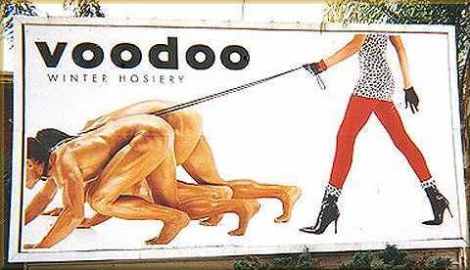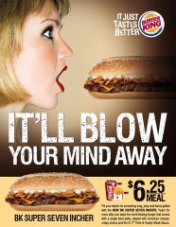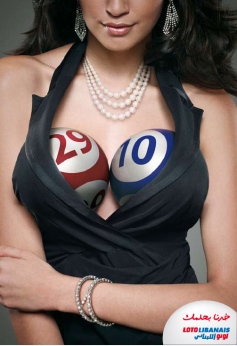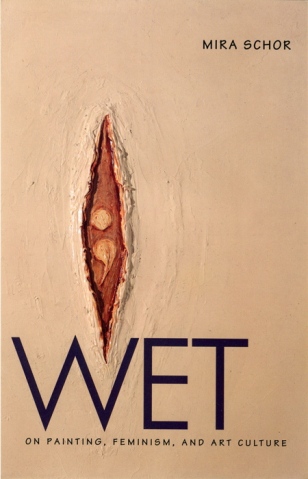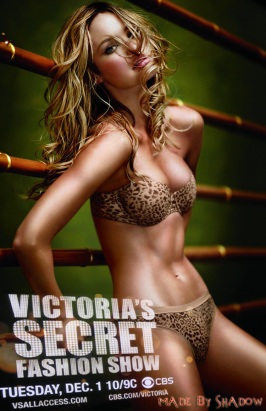Media business and different companies regarding feminism must all have balanced principles that would deal with financial viability via the advertising revenue. Yet advertising relied heavily on the hypothesis that sex sells. During my researches, I’ve noticed that sex appeals in women’s magazines of feminism are often portrayed in a demeaning manner. The third wave of feminist political economy theories to evaluate how sex appeals are created in the discourse and images of advertisements.
In my investigation, it is suggested there are three methods that signified how sex functions in advertising department: one, sex appeals and connected to sexual merchandise with a precept of feminism; two, sex appeals that promote feminist political protest; and lastly sex appeals that sponsor a feminist obligation to different identities, it suggested the idea not only provide different opportunities for profits streams but also opening to reinforce feminist ideology throughout.
Feminist in advertising begun as helping aid and supporting during the war, however when the battle has ended, the supportive of feminist was taken down and replaced with feminist ads of house cleaning product, the image below is one of the ads.
Though throughout in the 1970s, feminist groups came together to draw the public’s awareness regarding the sexual stereotypes with in advertising and to change them through protests, letter-writing campaigns and lawsuits. While feminists were occasionally successful in their protests against particular as, they were not always able to attain their goal of the government bylaw.
Those small victories then encouraged other protests, like the one against National Airlines’ 1971 “Fly me”, a promotion that required stewardesses to wear buttons bearing the slogans “Fly me” and “We make you feel good all over’ giving them all sort of sexual suggestive and unnecessary underline. The National Organization for Women then worked with Stewardesses for Women’s Rights to go against these ads. The groups began to run TV spots showing how badly the ads failed to show a stewardess’ primary function as the enforcer of safety rules. While the protests attained a great deal of media hype, they failed to stop the ads from being used by other airlines.
Feminists worked together to encourage the business to control and maintain sexism in advertising. In 1975, the National Advertising Review Board, an industry self-regulation organization that deals with truth and accuracy in advertising, released a report, “Advertising & Women,” confirming the existence of sexist advertising and criticizing the industry for reinforcing dated stereotypes of men and women. NARB proceeded to offer advertisers guidelines for revising images of women to conform to the realities of a changed society.
A feminism billboard of a woman walking two naked men…
An ad for burger king with sexual suggestive undertone.
Another Ad, but this time is lottery with sexual suggestion of the female anatomy.
What clearly had changed by the mid-1970s was the amount of publicity the production itself paid to images of women in advertising. Companies such as Procter & Gamble Co., which usually only targeted TV spots to women during the day, began buying time on nightly news programs to reach working women. Revisions of women’s symbol during the mid-1970s, it was putting more pressure on the industry to make different changes. Jean Kilbourne’s influential 1976 film “Killing Us Softly” judged the industry’s sexism in particularly devastating and detailed ways that produced widespread industry response.
In the 1980s, the art market may have glorified the return to large scale painting by various young male artists who sometimes engaged in retrograde “backlash” representations of women, “but much of the most important art of the period was made by women critiquing such representations in photography and performance art and using appropriation, to critique the nexus between women and the commodity fetish.” An example of this piece of art is below:
Shifting the Gaze revealed how many feminists had not given up on painting, feminist artists who did see, who do see painting as a space in which they can explore a wide range of social themes from female sexuality, gender transformation to genocide and war, using a wide variety of aesthetic strategies, like from abstraction, pattern and decoration to photography-based representation to language. And the field of women painting along feminist themes or informed by a general feminist politics is much bigger than one show can accommodate, there are so many more artists who could be included, it is a vibrant field.
By the 21st century, feminism’s impact on advertising could be felt most in society’s increased awareness of sexism in advertising, it was an awareness that continually encouraged by many feminist scholars, journalists, advertisers and activists. There are currently many Internet sites dedicated to the representation of women, and a large number of international women’s organizations continue both to monitor women’s representation and to resist increasing global domination by a small number of corporations in which women have very little power.
In advertising in all-purpose, there is a new and different focus on female consumers compared to ads of the 1950s and earlier. “An increasing number of marketing researchers apply feminist perspectives to marketing phenomena, particularly within the field of consumer research.” (Catterall, Maclaran, Stevens, and interestingly enough, “Since the 1970s, a considerable feminist literature has accumulated which simultaneously confronts and confirms our marketing assumptions about women as consumers. There are feminist analyses of women and food, diet, body image, eating out, fashion, romance fictions, glossy magazines, savings and debt, home decorating, design, shopping, sport and leisure.” (Catterall, Maclaran, Stevens)
“The ads themselves… began to portray a consumerist version of liberated women, and new products (or at least products with new names) were devised for them to buy… Cosmetic companies were… quick to exploit feminist rhetoric. Revlon introduced ‘Charlie’ in 1973, a fragrance designed for and marketed to the ‘new woman.’ ‘Charlie ads featured what purported to be a no-nonsense single and independent working ‘girl’ with a fashion model face and figure, usually pictured in a pantsuit.”
This modern ad of a woman, compliment her, suggesting she is sexy and strong.
In my conclusion, feminism have supplied and transformation numbers of advertise over the past decades. The advertising business itself has been somewhat changed by the new presence of women in leadership roles. This new presence allows women’s ideas and opinions to be heard in advertising campaigns, which reasonably results in less stereotypical female images. Both the attitudes of these women and their presence in the industry are largely attributable to feminism. Adding together, the impact of feminism are illustrated in a more noticeable and differences between ads of present-day and several decades ago. Women’s advertising, which used to portray a household, inferior portrayal of women, are now more often shows them as strong, intelligent, sexy, and equality to men – concepts that are directly related to feminism. Moreover, advertising responds to the societal conditions of the time, since they help to shape peoples values, beliefs, and priorities. The feminist movement was a social provision and therefore it shaped people’s values. It is evident in a more gender-equalized society than in decades past. It follows then, that feminism equally influenced, if not transformed advertising.
PKim 0807539

